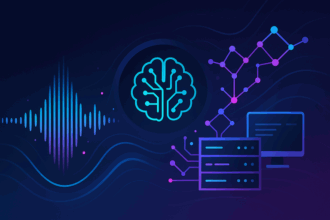AI Weekly: FDA’s INTACT Launch Signals New Era of Government AI Adoption While SoftBank Plans Trillion-Dollar AI Hub
Executive Summary
This week marked a pivotal shift in enterprise AI adoption as the FDA launched its first agency-wide AI system, while SoftBank unveiled plans for a massive AI-robotics industrial complex. These developments, alongside breakthrough research in healthcare AI, signal accelerating institutional adoption and infrastructure investment in AI technologies.
Game-Changing Government AI Deployment
The FDA’s introduction of INTACT on June 20 represents a watershed moment for AI in government operations. This first-of-its-kind agency-wide AI system aims to enhance public service efficiency across departments, setting a new precedent for AI adoption in regulatory environments.
The deployment demonstrates that government agencies are moving beyond pilot programs to full-scale AI integration, suggesting a maturing confidence in AI’s reliability for mission-critical operations. For enterprise technical leaders, this signals a need to prepare for increased AI adoption in regulated industries and stronger emphasis on compliance-ready AI solutions.
Healthcare AI Breakthrough: Multimodal Innovation in Elderly Care
A significant technical advancement emerged with Jason Yang and Ruoqi Li’s development of an AI-driven multimodal model for elderly fall risk assessment. This innovation combines multiple data streams to enhance prediction accuracy, representing a crucial step forward in healthcare AI applications.
The breakthrough highlights the growing sophistication of multimodal AI approaches and their potential to solve complex healthcare challenges. Technical teams should note the importance of:
- Data integration capabilities across multiple modalities
- Clinical system interoperability
- Validation processes for healthcare AI applications
SoftBank’s Ambitious AI Infrastructure Play
Perhaps the most far-reaching announcement came from SoftBank Group, with plans for “Project Crystal Land,” a $1 trillion AI-robotics industrial complex in Arizona. This massive initiative aims to create an integrated ecosystem for AI hardware and software development, including partnerships with major semiconductor manufacturers.
The scale of this investment suggests a dramatic reshaping of AI infrastructure and supply chains, with implications for:
- Domestic AI hardware manufacturing capacity
- Cross-disciplinary integration of AI and robotics
- Future AI development and deployment capabilities
Forward-Looking Analysis
The next 3-6 months will likely see:
- Increased government agency AI adoption following FDA’s example
- Accelerated healthcare AI pilot programs leveraging multimodal approaches
- Early-stage developments in AI manufacturing infrastructure
- Growing emphasis on compliance and security in AI deployments
Technical leaders should consider:
- Reviewing AI compliance frameworks for regulated industry applications
- Evaluating multimodal AI capabilities for specific use cases
- Assessing strategic positions in emerging AI supply chains
- Planning for increased AI infrastructure investments
Key Takeaways
- Government AI adoption is moving from experimental to operational, requiring robust enterprise-grade solutions
- Multimodal AI approaches are proving valuable for complex healthcare applications, suggesting broader applicability
- Major infrastructure investments signal long-term commitment to domestic AI capabilities
- Technical teams should prepare for accelerated AI adoption in regulated industries
Sources
- The AI Insider: Project Crystal Land coverage
- FDA announcement via Crescendo.ai
- XYZ Media: “Next Generation of Innovators”





